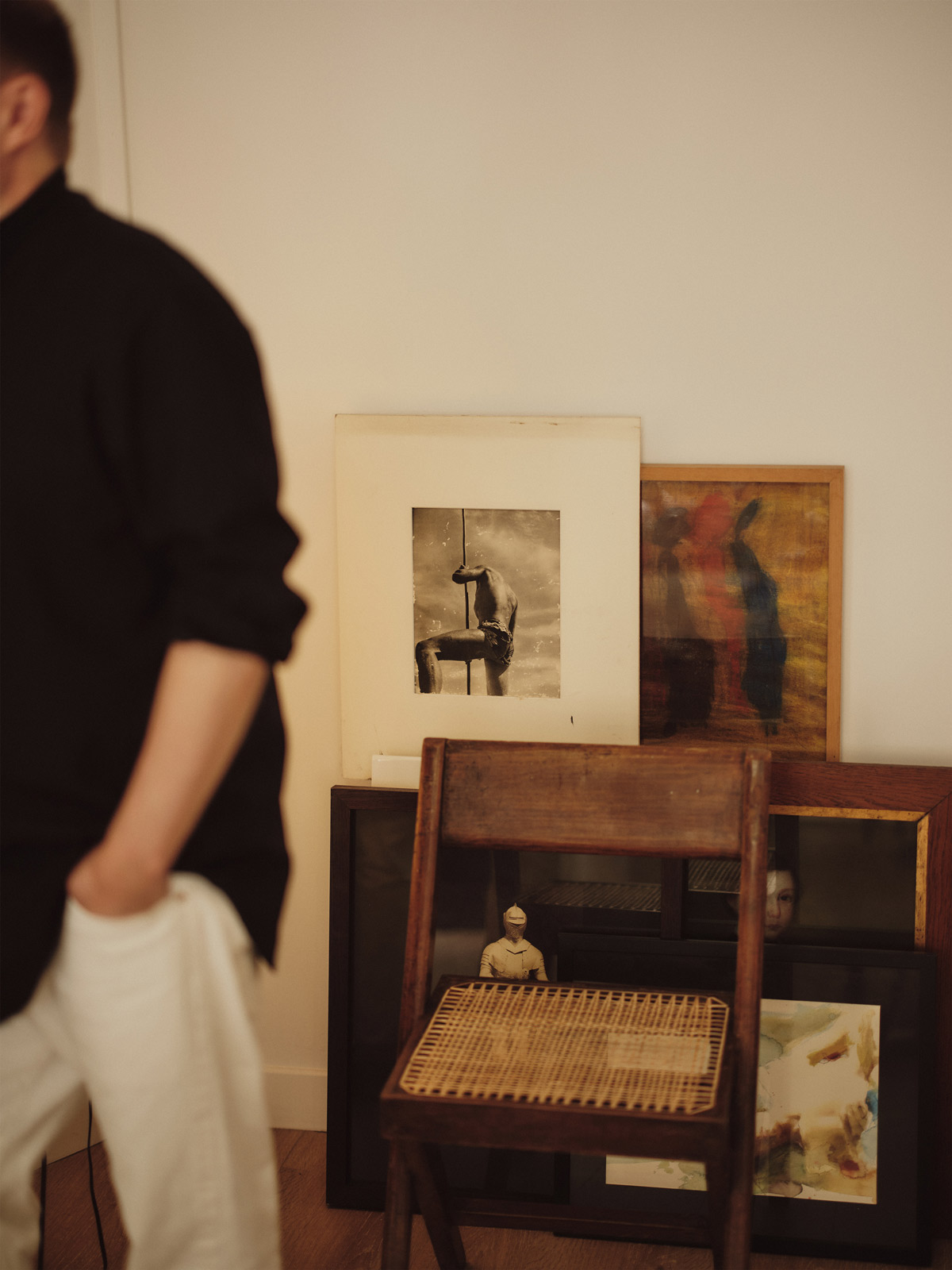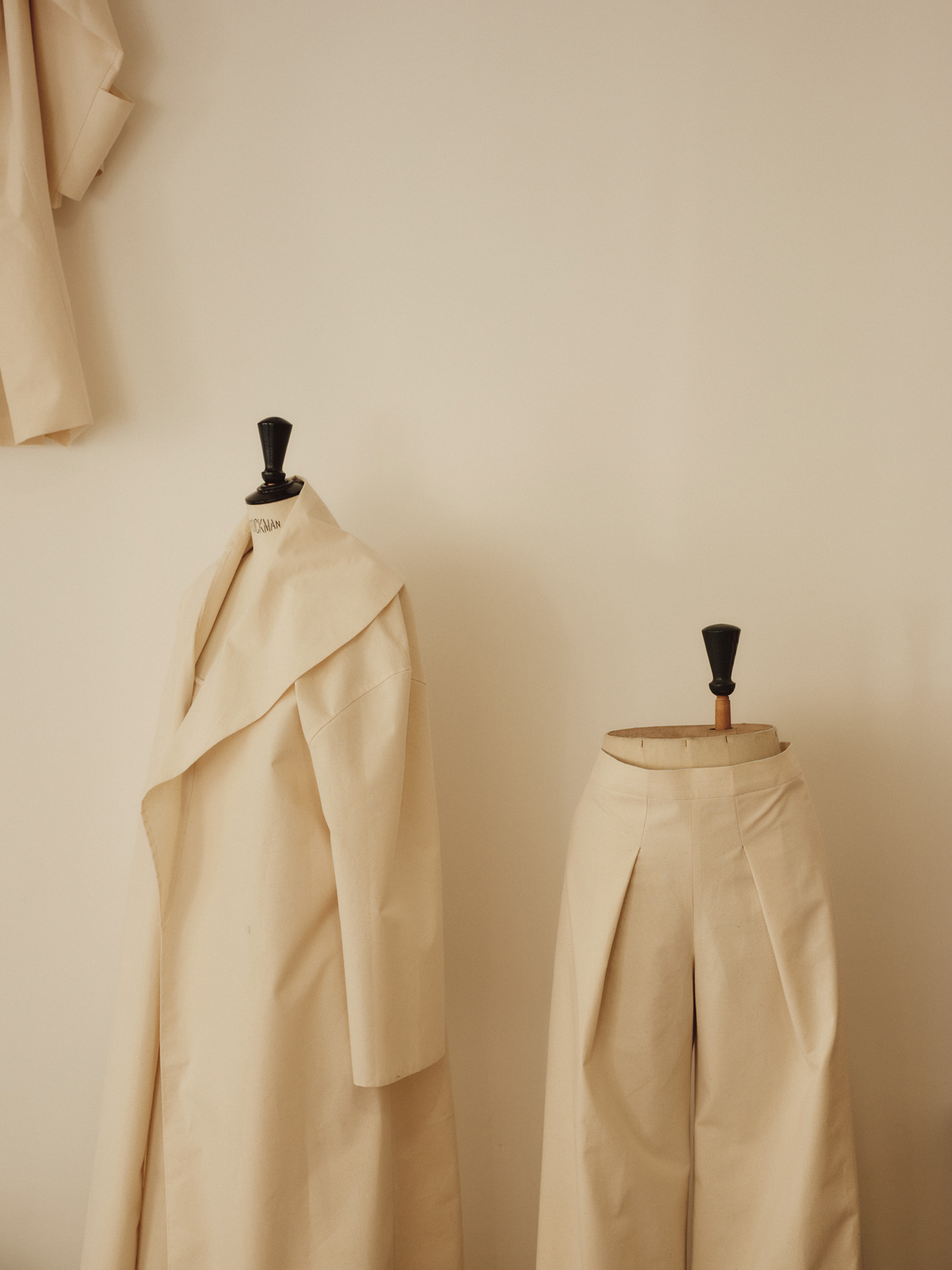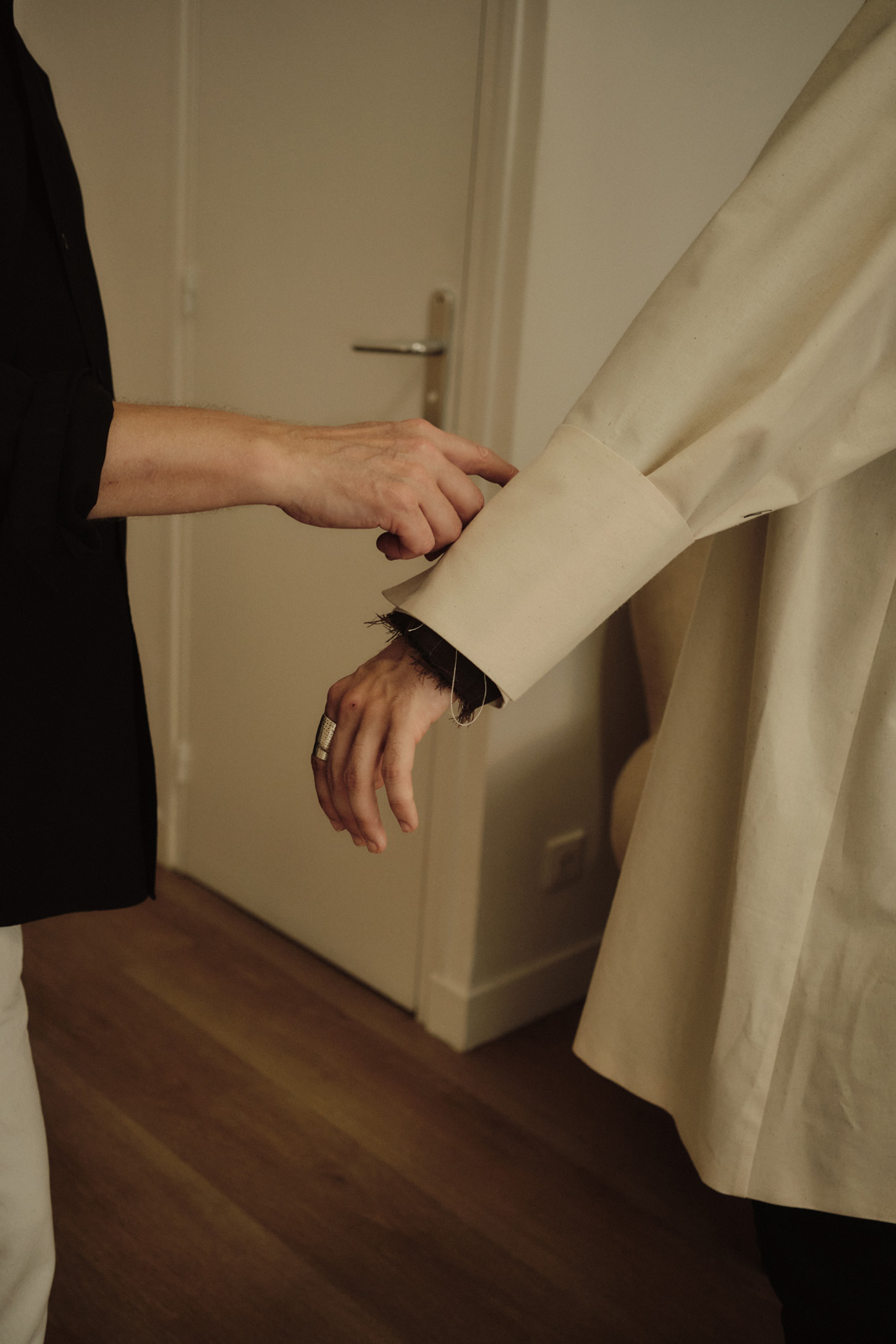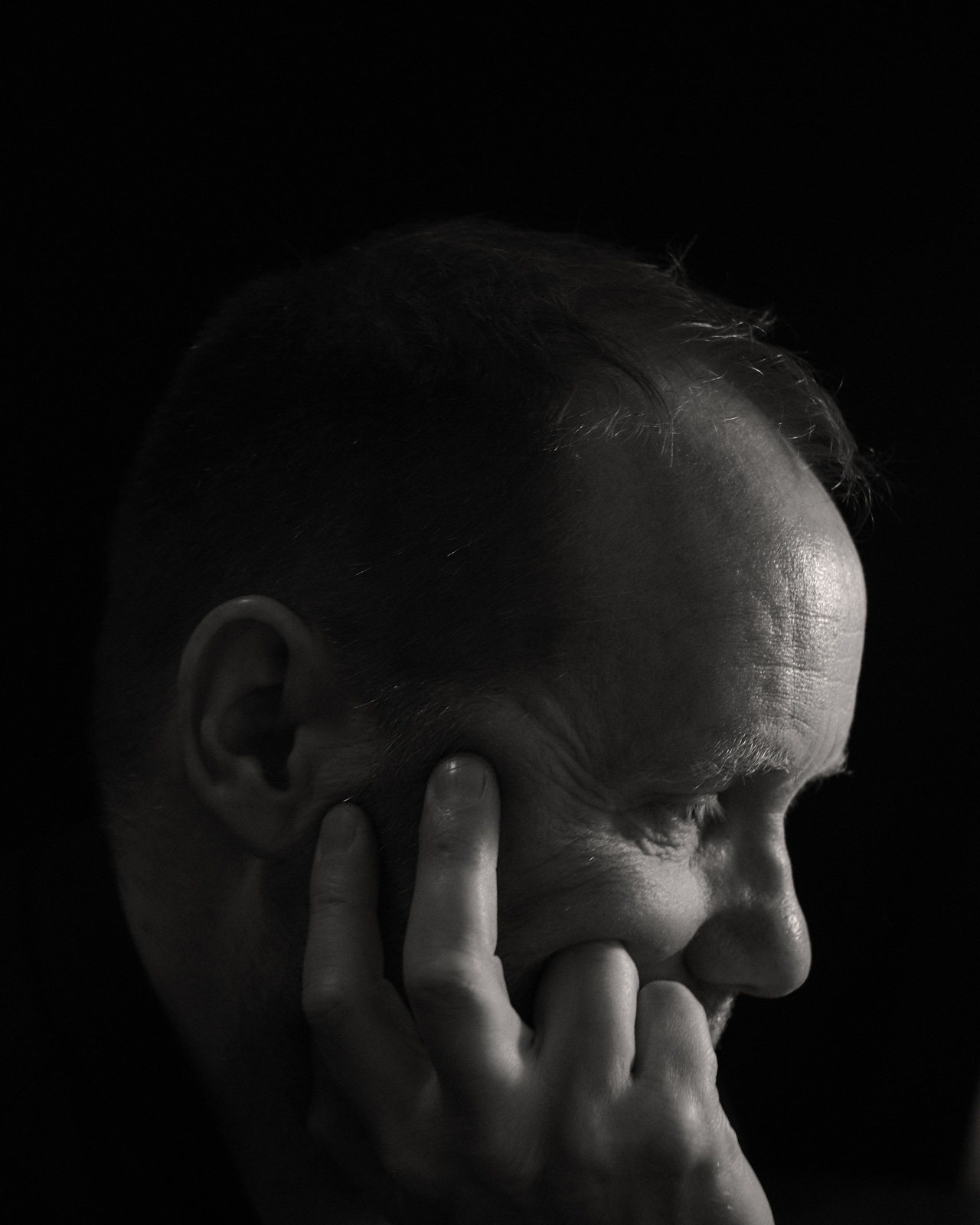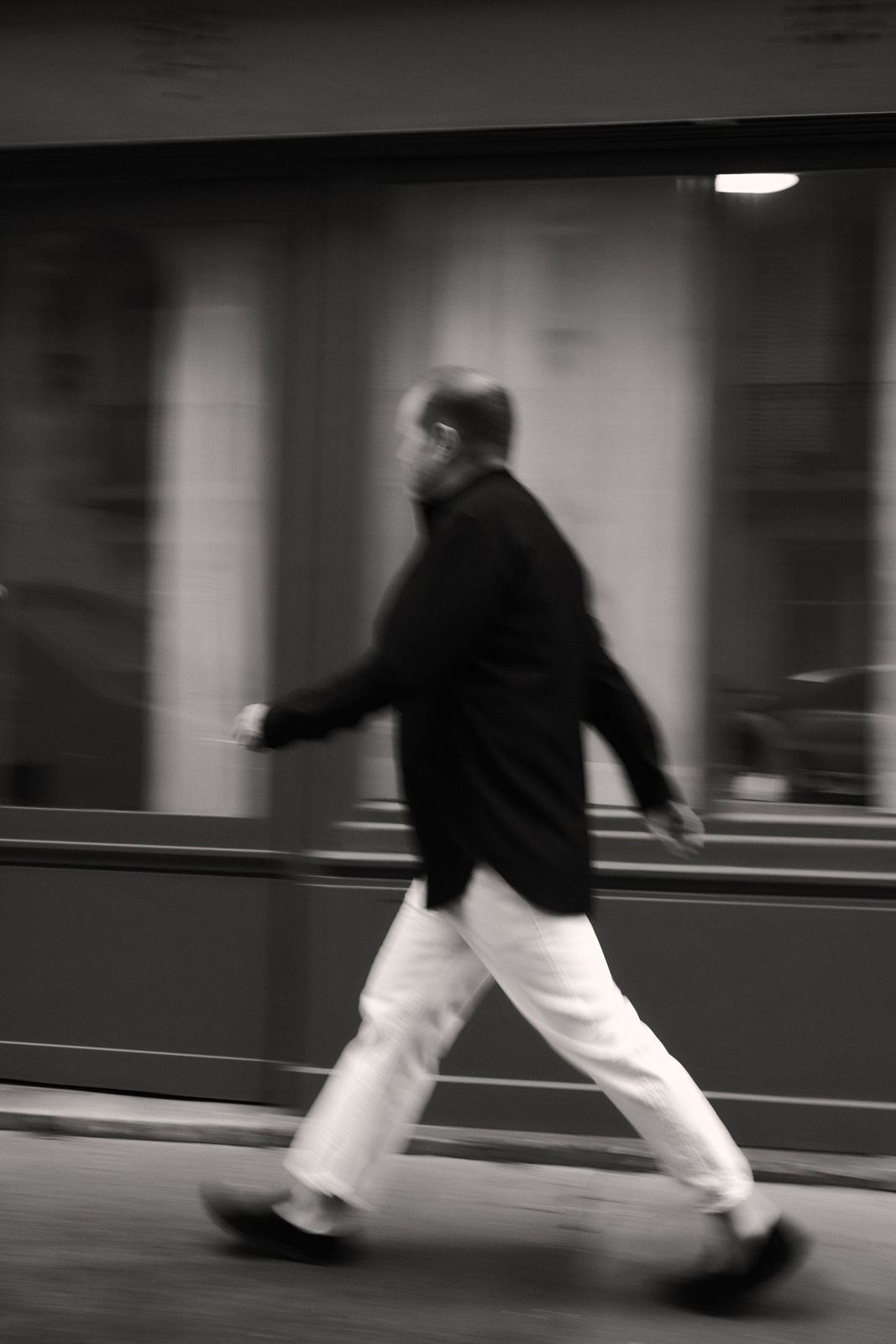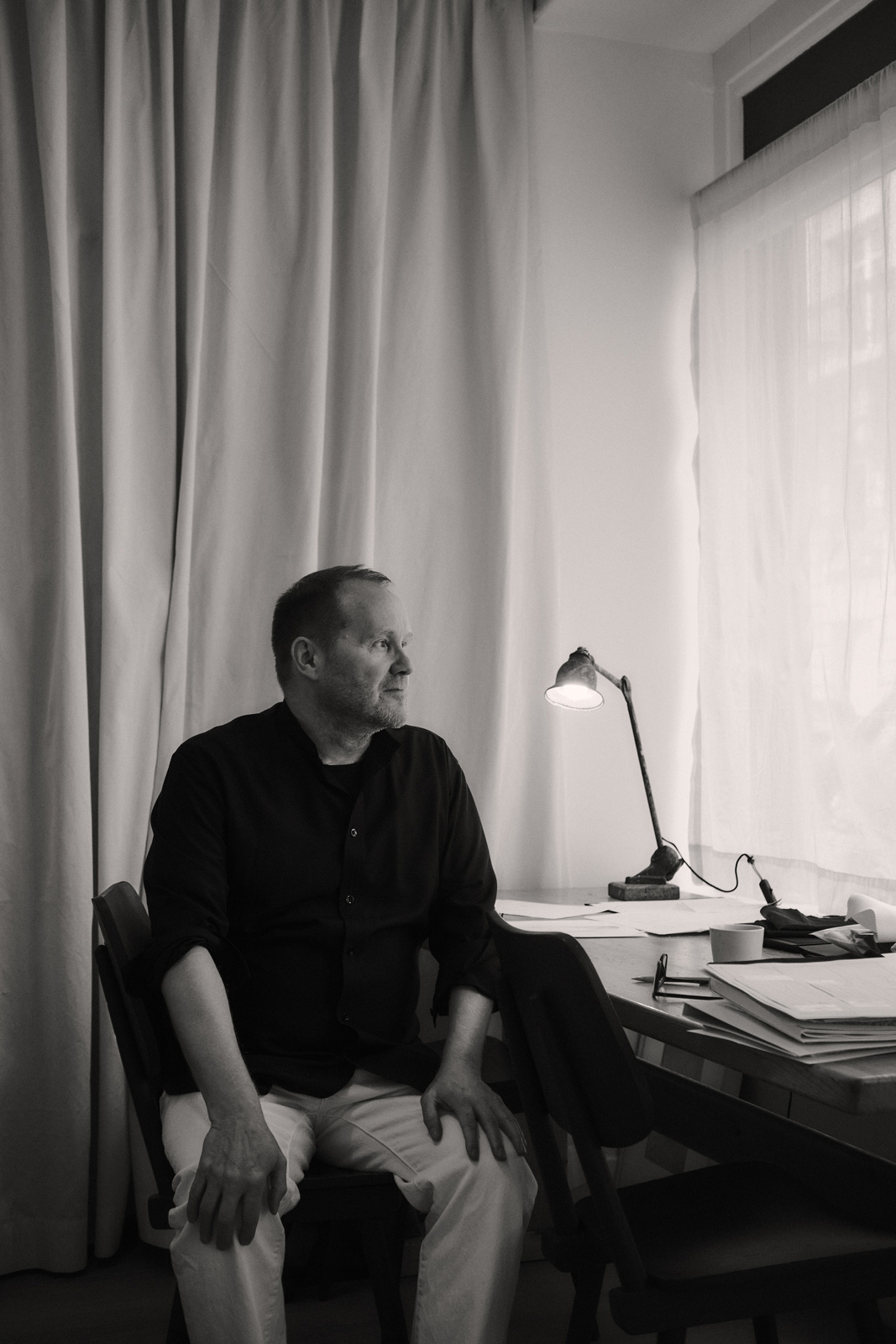
Creative Director Paul Helbers joins Document to muse on subverting with subtraction, and his self-assured style that need not raise its voice
“You can be completely feminine and beautiful and fluid, and fuck the suit,” says Dutch designer Paul Helbers of FFORME. “When you wear [the collection], it embraces you immediately so that the woman is completely at ease and expressive. It’s a subversion of power dressing; it’s very liberating.”
The Holland-born creative director’s design ethos revolves around clever reinterpretations of classics, embracing the unfussy while maintaining an air of deliberate aesthetic intention. The creative process itself is a testament to this approach, underpinned by the old-school process of working with depth and dimension on the stand, developing the shapes in 3D, rather than drawing. Collections are small, using only five or six key fabrics, and are designed to be modular and buildable alongside FFORME’s entire archive. Creations possess an architectural quality, wherever seam and contour is considered; each piece is made in one of three family-owned factories in Italy.
Helbers draws on a master class in menswear at luxury houses such as Maison Margiela, Louis Vuitton, and The Row. In his vision for FFORME, designs are sleek, sculptural, and platonic, defined more so by a philosophy of mobility and comfort than by fashion and trend. Striking a balance of unrestrive elegance, the brand captures the essence of European refinement with American ease.
Reflecting on the starting point for FFORME’s debut runway show at New York Fashion Week, Helbers demurs: “We don’t really do themes or anything. The story of the collection is the collection itself.” However, when pressed, Helbers admits that certain shapes came to him while watching sardine sailboats return for the day in Brittany, France. The overlapping volumes of flat against round, the graphic nature of straps and ropes, all visible—just barely—throughout.
Helbers is indeed something of a mathematician, who never shows his work—decorating slip-on leather trousers with 40 pleats, distributing volume from the waistband with exacting precision; hammering crepe de chine silk to ensure it is less transparent; crafting silhouettes that possess a strictness at the front, but are entirely at ease at the back; applying soufflé pockets that conceal bulk. There are interior kangaroo pockets and hidden constructions—if a cape sleeve appears oversized, it never truly is. Rather, it’s ergonomically anchored to the shoulder, the fabric in symbiosis with the body.
Here, Helbers muses on subtlety, subverting with subtraction, and his self-assured style that need not raise its voice.
Divya Bala: Growing up in Rotterdam, in Holland, you mentioned you wanted to be different from others. What were you immersed in at the time?
Paul Helbers: I was very unhappy and felt misunderstood. I was just in my own bubble. For me, it was music. I did everything to buy a record player and records. [I would] listen to post-punk, neo-Romantic… I suppose, at some point, I saw David Sylvian. At the time, he wore a lot of makeup, a brown suit. I said to my mom, I want that brown suit, so we made it together. I would go out to the local disco and everybody would be wearing jeans and t-shirts, and I was in my brown suit.
I was in my own world and I lived in my room. From my desk to the walls to my record player, I painted [everything] white—which was weird, because later in my life, I would work for Margiela, and that was the shop concept. I was just really quite individualistic, I guess.
Divya: What were you studying?
Paul: I went to the Academy of Fine Arts at the Rietveld in Amsterdam, and I really wasn’t sure that I wanted to do fashion. I liked sculpture, ceramics, and graphic design. In the first year, you experiment, and then [the school] gives you advice [as to] what they think you’re best at. They said to me, ‘We can see [you in] any discipline, but not fashion.’ And I said, ‘That’s what I want to do.’ And that’s what I did.
I was not good at drawing, and fashion courses [are] all about drawing. I cared much more about the physicality of clothes—cutting them and making them and draping them.
“I think FFORME is really about shapes, about exploring exaggerated and sometimes architectural silhouettes—but at the same time, creating a relationship with the body. “
Divya: What was your next move?
Paul: When I was young, I worked at a retail shop called Mac&Maggie, for men and women. I did that for two, three years. And then they gave me a contract as a visual merchandiser, and when I graduated from the Academy of Arts, I started designing for them. At a very early age, they had me go to India, Turkey, and Portugal to see how factories work. I left at 25 and started my own brand in ’92.
Divya: Do you feel that line had whispers of FFORME in it?
Paul: Absolutely—It was called Inch. We were doing sportswear [with] tailoring, so we studied very intricate construction that allowed you to move. We did a lot of studies around firemen’s clothes and how those garments move, and how you can translate that into daywear.
There were two of us, and we made all the patterns ourselves because we couldn’t afford pattern cutters—then we’d send them to Belgium to be made. The line was clean, it was sculptural. It would still be very relevant [today].
We didn’t have [financial] backers so we decided to stop. Then, in 1999, I got a call from Margiela asking me if I’d like to work for them, and I moved to Paris. After more than five years there, I [became the] creative director of menswear at Louis Vuitton, did that for five and a half years. And when I left, I started my own line again, [called] Helbers. I realized I didn’t want to be a businessperson so I didn’t continue—then, I set up the men’s collection for The Row, and during the pandemic, I got a call from FFORME. I really loved the idea that [it was] back to making real clothes, not just being a part of a big, political structure.
Divya: What is the philosophy of FFORME?
Paul: I think FFORME is really about shapes, about exploring exaggerated and sometimes architectural silhouettes—but at the same time, creating a relationship with the body. The combination of boldness and wearability gives you something that is not basic, but [creates] unconventional essentials. It’s an immediate frame of the body and the face. You can put it on, and you don’t need much [else]. It’s about celebrating, making women feel secure in their raw beauty. You don’t need hair and makeup.
It is developed using European craftsmanship, but combined with a sort of American ease. I think that’s what sets us apart from the traditional luxury houses. And [there’s] a long life cycle in the product’s quality. It’s a timeless and thoughtful approach—it’s not of the moment. It’s trying to create a small range of clothes that you can really enjoy for a long time, and are very modular, so that each season, you can build upon [the last]. We try to reduce all the time, see what we need and what we don’t need in a garment. And menswear is very technical; it’s very much about fit and small details. I’m trying to bring that to womenswear.
Divya: How do you approach making the garments?
Paul: I have a small studio in Paris and every single shape is draped on a stockman. It’s a very three-dimensional approach. And FFORME has the double F—it means foundational and fundamental. It’s really a fundamental change in how things are organized with our factories. We do a very small collection that lasts—it’s kind of off-fashion and timeless. But at the same time, it’s also foundation: Everything is modular—colors, shapes, you can wear everything with everything.
Divya: What form does FFORME take in the future?
Paul: For me, it’s about growth and making the company successful, but in a very balanced way. We want to stay true to our philosophy. Ultimately, we’ll start to do accessories, like bags. We want to [do it] in a unisex and gender-fluid way. So we will start to slowly introduce menswear, which we are already doing for the coming show, and there will be more and more unisex pieces—whatever that means. Everybody’s free to wear whatever they want, and we’re already selling to men.
Divya: How do you feel about FFORME’s upcoming first runway?
Paul: Oh, it’s wonderful. I am very excited. I think our clothes really come alive when you see them walking out, one after another. In a show, you can really explain who your woman is in who you’re casting. The show is going to be at the DiMenna Center, which is a space for classical music and ballet. It’s a space that is built to sound good and not to look good, which I like, because it has a functionality, and our clothes have a functionality, too. We think about what a woman wants from her clothing, how she wears it and styles it to get through the week, to the weekend. The dialogue with the women we are dressing is really at the center of our thinking.


